John Groves
Operetta Research Center
20 July, 2017
The Staatsoperette Dresden has recently moved into a new, much-needed, purpose built theatre in the centre of the city. The 630 seat building has been included in ‘Kraftwerk Mitte,’ a complex of arts organizations situated in and around what had been for many years a derelict industrial complex. Indeed, whilst the black and red stylish auditorium is new-build, the huge foyer spaces have been created inside an old factory, complete with rusting overhead cranes.
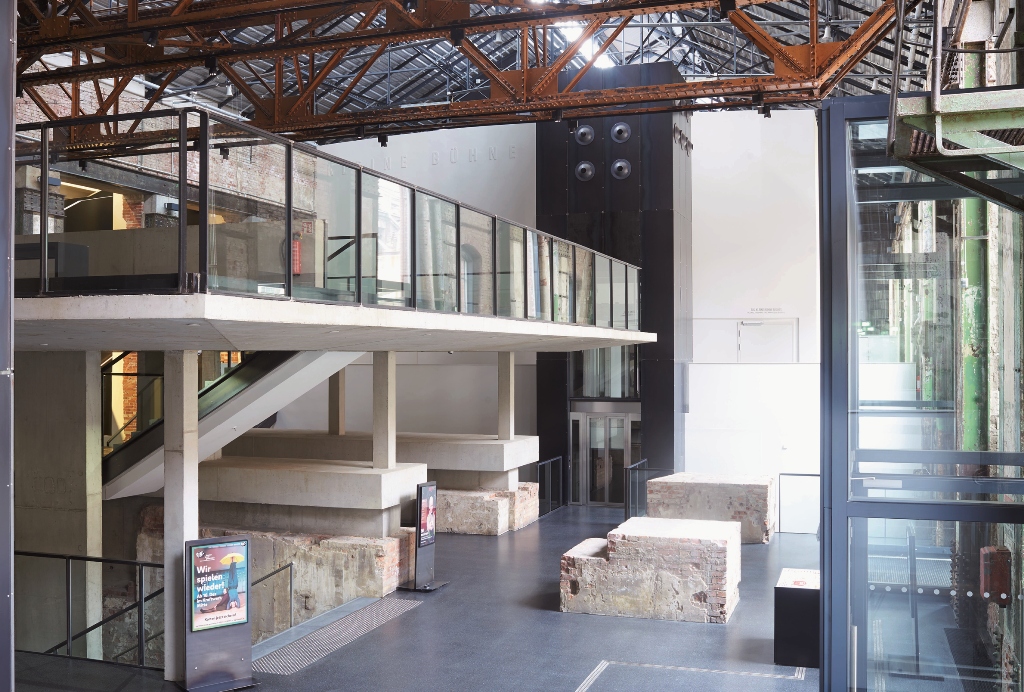
The foyer of the new Staatsoperette Dresden at Kraftwerk-Mitte. (Photo: Stephan Floß)
It has been superbly designed, the wide rather than deep seating area giving an intimate, warm feel to the space and the expansive stage and large orchestra pit meaning that much more adventurous productions can be staged than was possible at the previous venue.
Seats have been carefully positioned so that none is directly behind the one in front and their rake has been carefully calculated so that sight-lines are excellent. Perhaps most impressive is that seat numbers have been embroidered so clearly that one is actually able to see them! Unfortunately, as always, toilets are too few and too small!
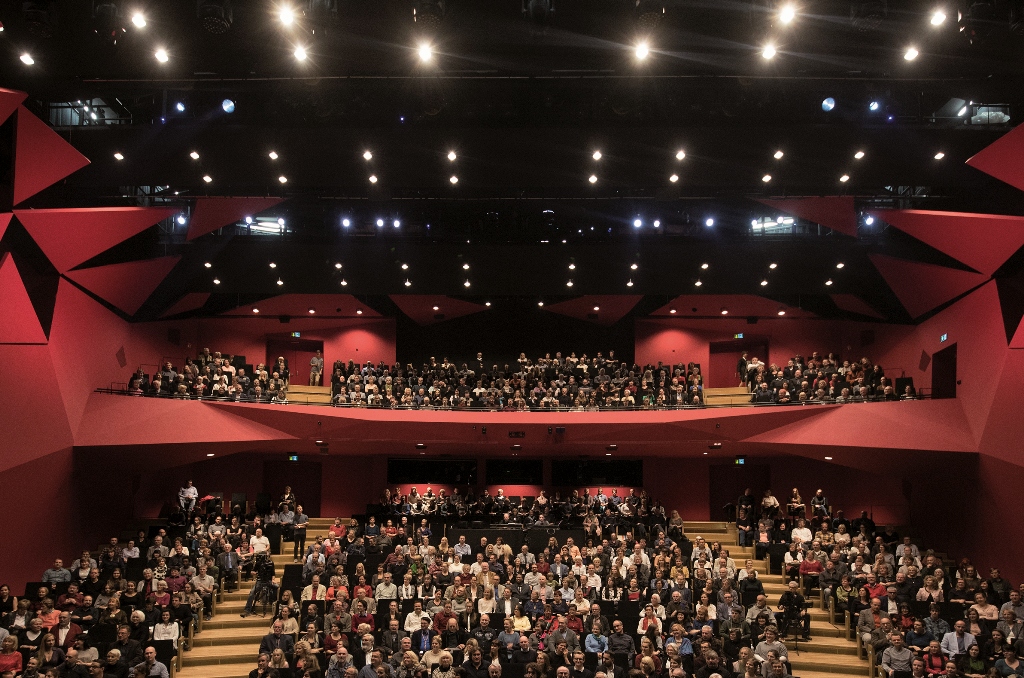
The new auditorium of the Staatsoperette Dresden. (Photo: Stephan Floß)
The 1858 Orphée aux enfers version, plus a few interpolations from the expanded 1874 revue edition, of this operetta was chosen for one of the first new productions because, as the program controversially states, it is “the first full-length operetta in music history.” I shall leave it to others to comment on that!
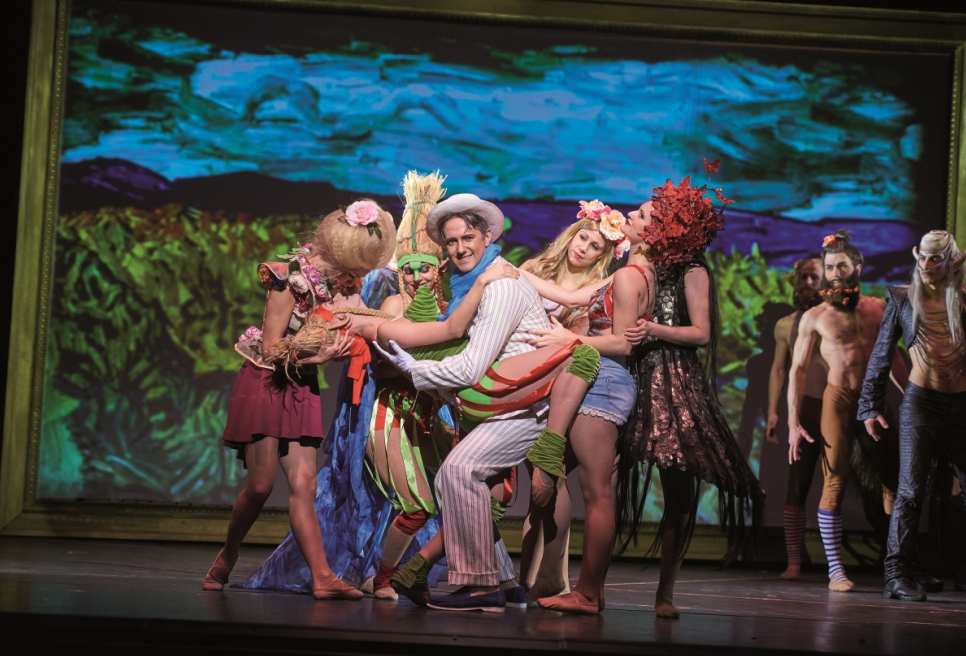
Radolslaw Rydewski as Pluto in “Orpheus in der Unterwelt,” at the Staatsoperette Dresden. (Photo: Stephan Floß)
Most striking about this production is the set design by Momme Hinrichs and Torge Moeller. The two scenes of the first act cleverly use a series of large landscape picture frames on which are projected various videos: most impressive are the clouds suggesting Mount Olympus which are very evocative. The River Styx in Act Two is suggested by a huge circular stream of light hitting the revolve, whilst Hades is allowed to speak for itself using lighting and a trapeze artist (unnamed). As with all the best set design, it was very imaginative but deceptively simple, allowing the actors/singers to use the stage to its best advantage.
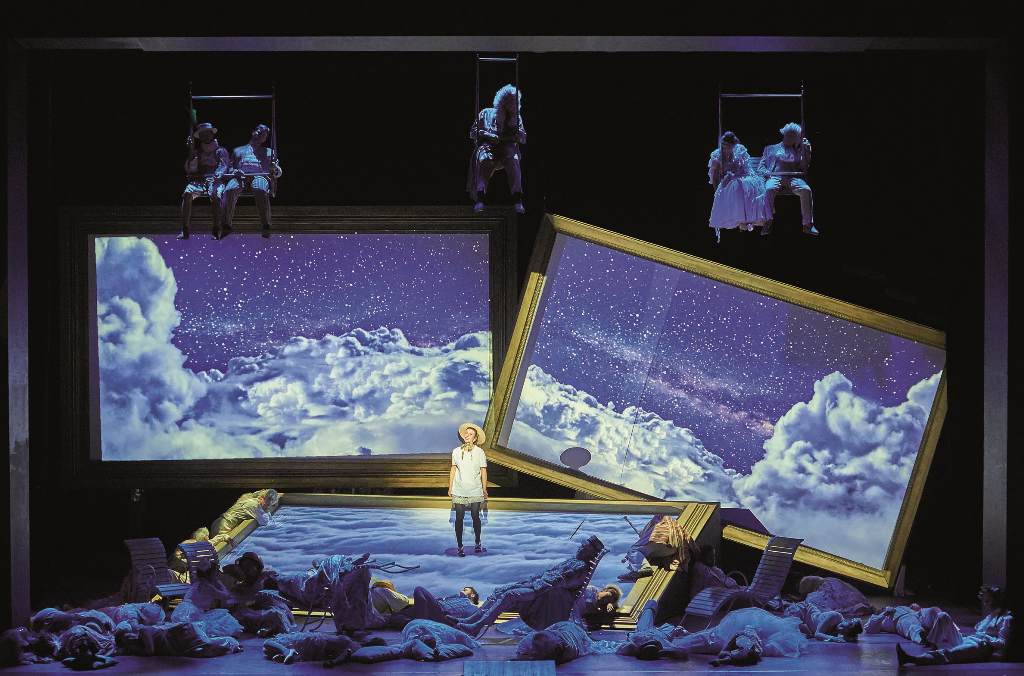
Scene with Marie Hänsel as Cupid in Act 2, “Orpheus in der Unterwelt” at the Staatsoperette Dresden. (Photo: Stephan Floß)
I was also very taken with the humorous costume designs (Uta Heiseke), especially those for the “Galop infernal”in the final scene: full length, very full, long skirts that had the weight to swirl beautifully – the choreography for this number (Radek Stopka) being literally show-stopping: the best I have seen – this number deserves a full encore!
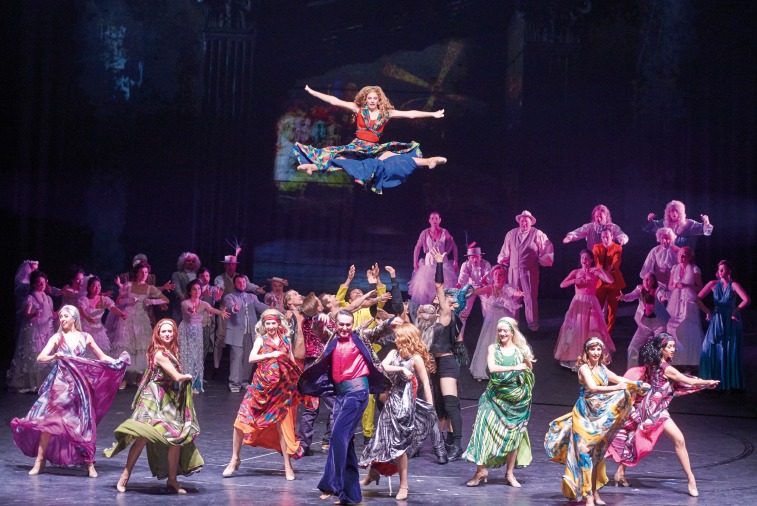
The dance ensemble in “Orpheus in der Unterwelt,” at Staatsoperette Dresden. (Photo: Stephan Floß)
In leading roles, Markus Francke was impressive as Orpheus, and Maria Perlt looked ravishing as Eurydike (German spelling), but had problems in projecting her dialogue, especially over the underscoring. This was especially noticeable in the first scene, which refused to ‘take off’, as one was struggling to hear her vital opening speeches which are essential for an understanding of the plot to follow!
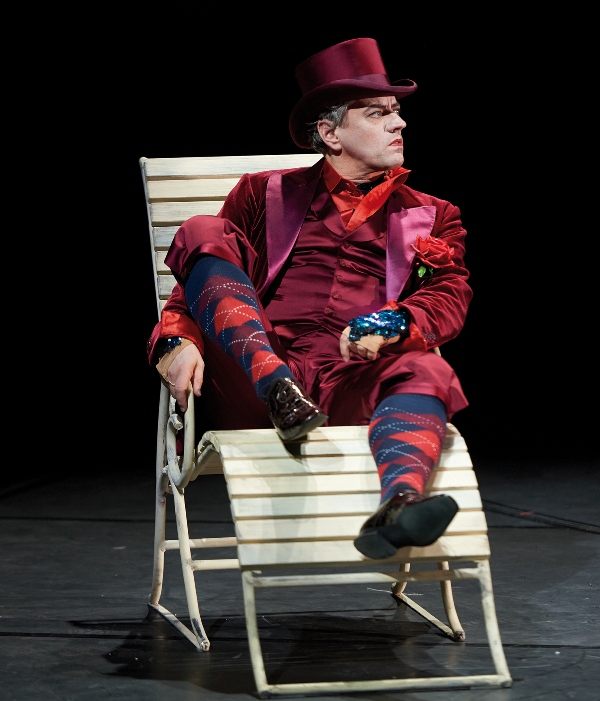
Christian Grygas as Pluto in “Orpheus in der Unterwelt,” Staatsoperette Dresden. (Photo: Stephan Floß)
Hauke Moeller was extremely amusing in the dual roles of Merkur and Zerberus, having the energy and vitality needed for this show, and which few others of the cast seemed to possess!
Perhaps most successful of all was Axel Koehler in the role of Hans Styx. He succeeded in creating the true Offenbach style, and in making us believe that his very secondary role, with only one song, was long remembered, and he deservedly received the warmest applause at the end.
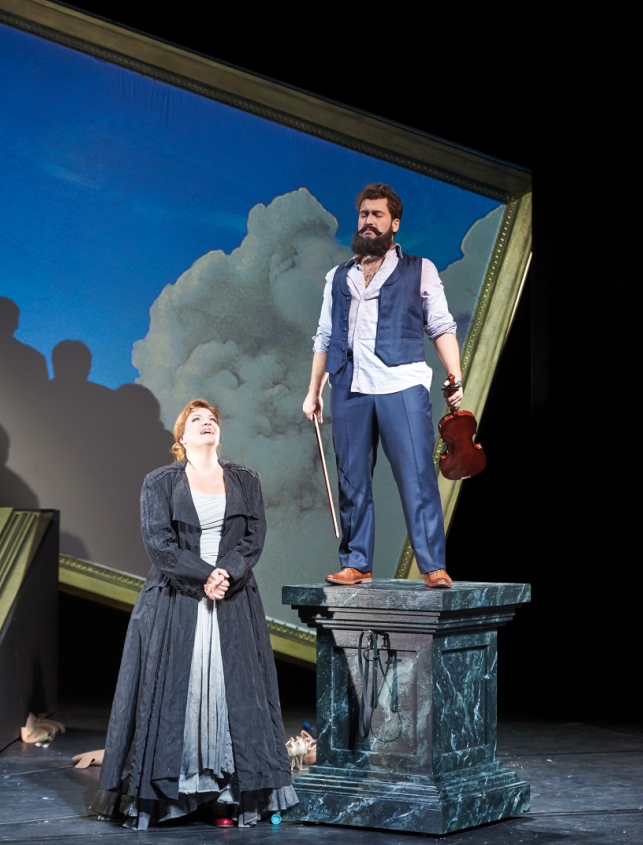
Silke Richter as the Public Opinion and Richard Samek as Orpheus, in “Orpheus in der Unterwelt” at the Staatsoperette Dresden. (Photo: Stephan Floß)
The director, Arne Boege, used the chorus well, exposing their acting as well as singing abilities to great and often amusing effect, but the whole production seemed to lack the precision, pace and joie de vivre necessary for this opéra bouffe, as Offenbach styled it.
The orchestra, under its conductor Thomas Runge, played with precision, clearly wallowing in its new found space, and sounding suitably ‘French’.
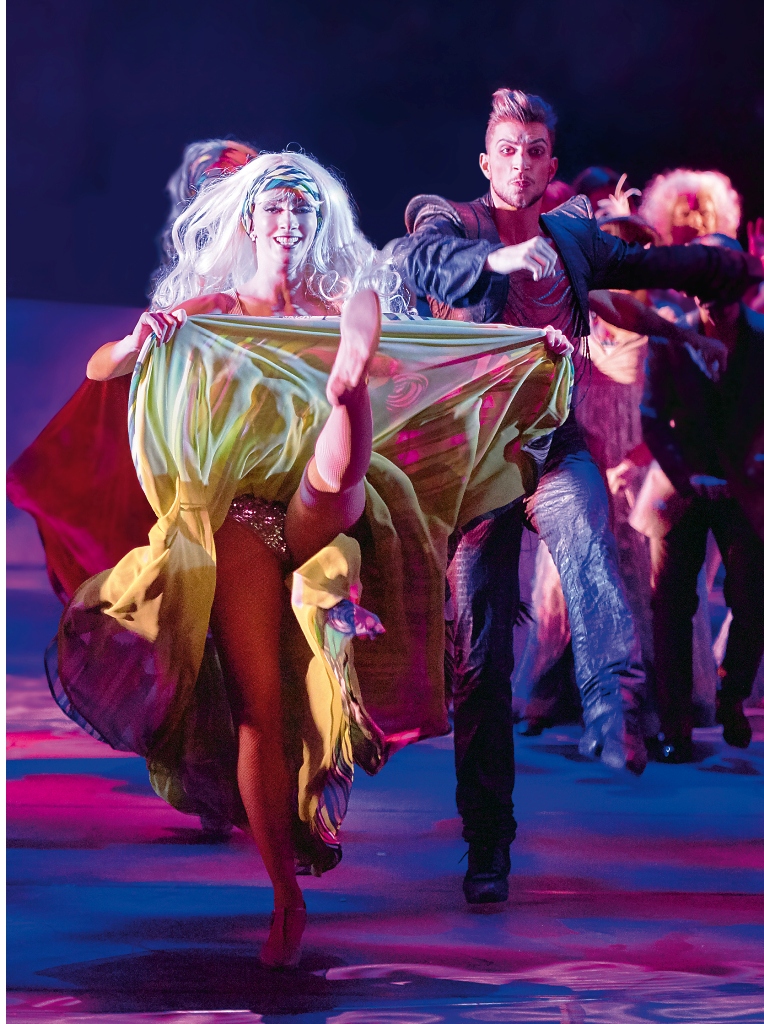
Dancers doing the “Galop infernal” in “Orpheus in der Unterwelt,” Staatsoperette Dresden. (Photo: Stephan Floß)
I enjoyed seeing this production in this gorgeous new venue, but it either looked a bit ‘tired’ or slightly under-rehearsed and tentative at times: it was certainly not as much frothy fun as I have seen in other German productions.
For more information and future performance dates, click here. The Staatsoperette Dresden has published a new (German language) collection of essays on Offenbach and Orpheus, for more details click here.

Another excellent review from Mr.Groves giving a very succinct and perceptive analysis. If only we had a few more imaginatively designed venues such as this in the UK!